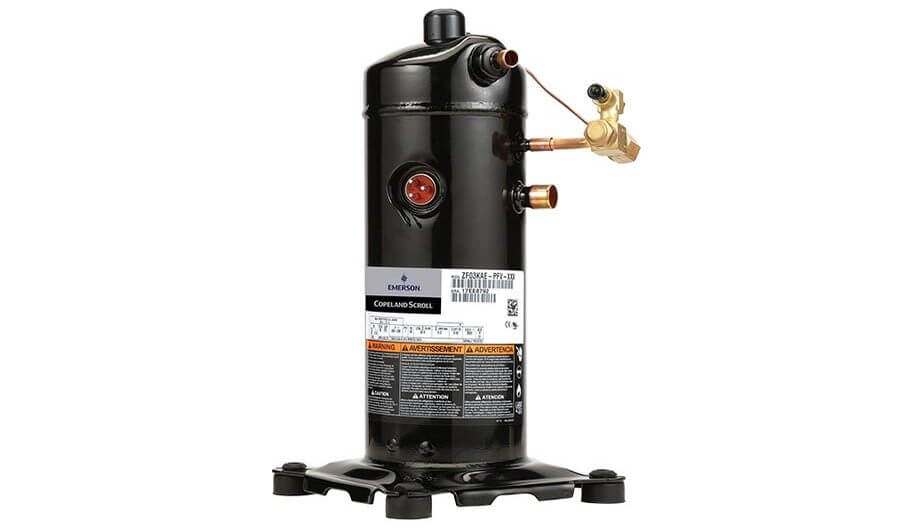
Refrigeration compressors and air conditioning compressors provide air conditioning, heat pumping, and refrigeration for large-scale facilities and equipment. They use compression to raise the temperature of a low-pressure gas, and also remove vapor from the evaporator. Most refrigeration compressors (refrigerant compressors) are large, mechanical units that form the heart of industrial cooling, heating, ventilation, and air conditioning (HVAC) systems. Many air conditioning compressors are also large-scale mechanical devices; however, these compressors are designed specifically for air conditioning systems and do not provide heating or ventilation functions.
Refrigerant compressors work by taking in low pressure gas on the inlet and compressing it mechanically. Different types of compression mechanisms are what differentiate compressors (discussed below). This compression creates a high temperature, high pressure gas - an essential step in the overarching refrigeration cycle.
There are a number of different types of compressors used for refrigeration and air conditioning. Like pumps, all "heat pumps" can first be categorized as either positive displacement or non-positive displacement (centrifugal). Positive displacement compressors have chambers which decrease in volume during compression, while non-positive displacement compressors have fixed-volume chambers. Beyond this distinction, each type differs based on its specific mechanism for fluid compression. The four main types of compressors are piston, rotary, screw and scroll.
Piston compressors, also called reciprocating compressors, use a piston and cylinder arrangement to provide compressive force - like combustion engines or piston pumps. The reciprocating motion of the piston due to external power compresses the refrigerant inside the cylinder. Piston compressors have a low initial cost and a simple, easy to install design. They have a large power output range and can reach extremely high pressures. However, they have high maintenance costs, potential vibrational issues, and are not typically designed to run continuously at full capacity.
Rotary compressors have two rotating elements, like gears, between which the refrigerant is compressed. These compressors are very efficient because the actions of taking in refrigerant and compressing refrigerant occur simultaneously. They have very few moving parts, low rotational speeds, low initial and maintenance costs, and are forgiving in dirty environments. However, they are limited to smaller volumes of the gas and produce less pressure than other types of compressors.
Screw compressors use a pair of helical rotors or screws which mesh together to compress the refrigerant between them. They can produce high pressure for a small quantity of gas and consume less power than reciprocating compressors. They have low to medium initial and maintenance costs and few moving parts. However, they have difficulty in dirty environments, high rotational speeds, and shorter life expectancies than other designs.
Scroll compressors use two offset spiral disks nested together to compress the refrigerant. The upper disk is stationary while the lower disk moves in orbital fashion. Scroll compressors are quiet, smooth-operating units with few moving parts and the highest efficiency ratio of all compressor types. They also are more flexible for handling refrigerants in the liquid. However, as fully hermetic designs, scroll compressors cannot be easily repaired. They also typically cannot rotate in both directions. Scroll compressors are commonly used in automobile air conditioning systems and commercial chillers.
Usually compressors are designed to work with a particular type of refrigerant. Selecting a proper refrigeration compressor or air conditioning compressor requires finding a compressor rated for the desired refrigerant for the application.
We provide all these types of compressors at affordable prices and we also install them at pocket friendly prices. If you have any question regarding the same do not hesitate to contact us today.